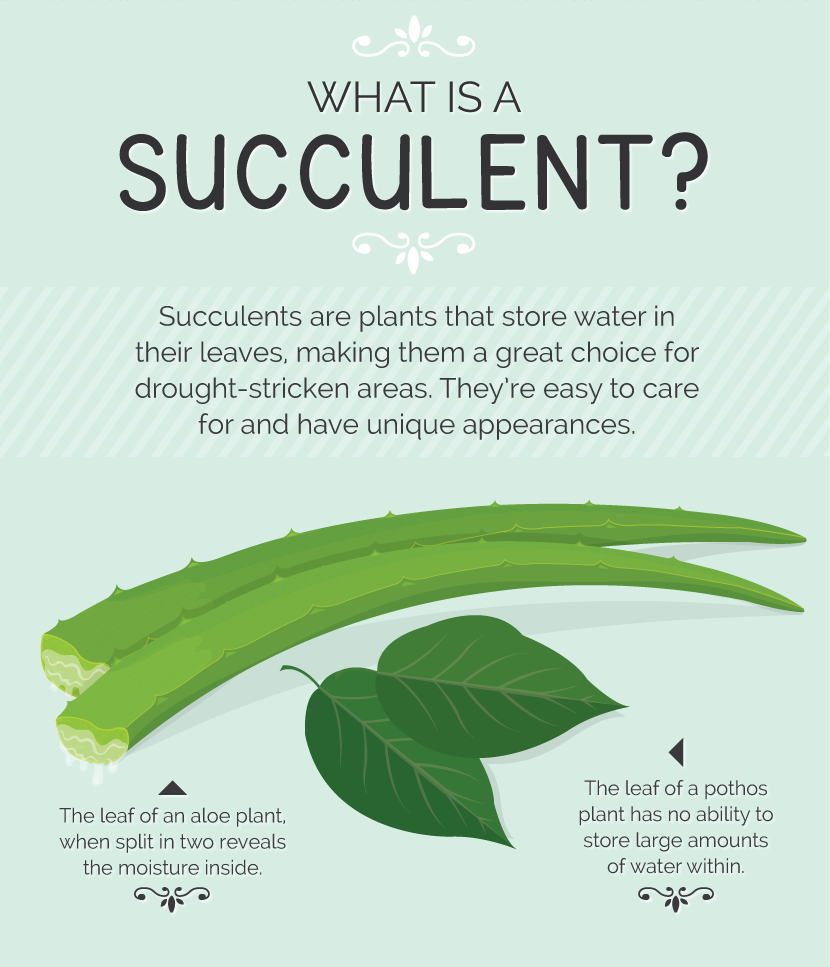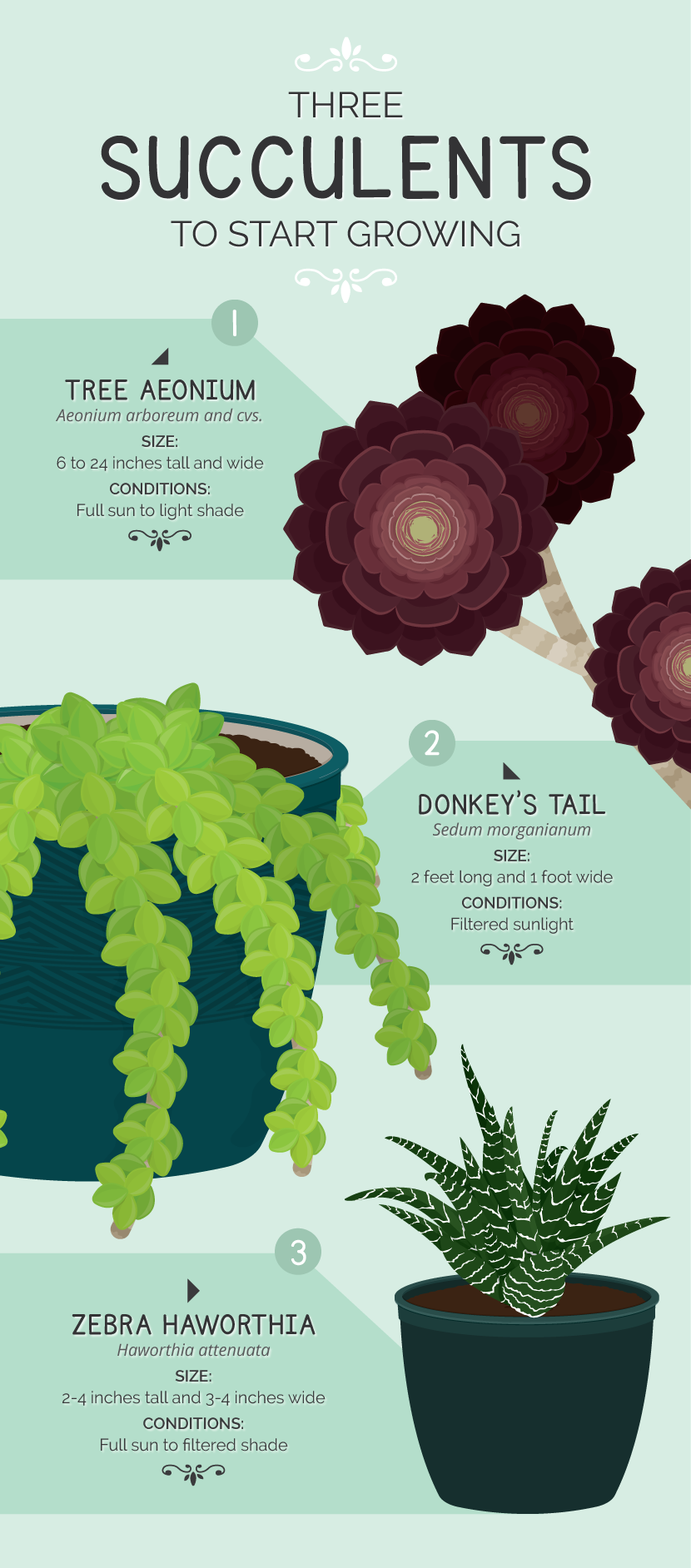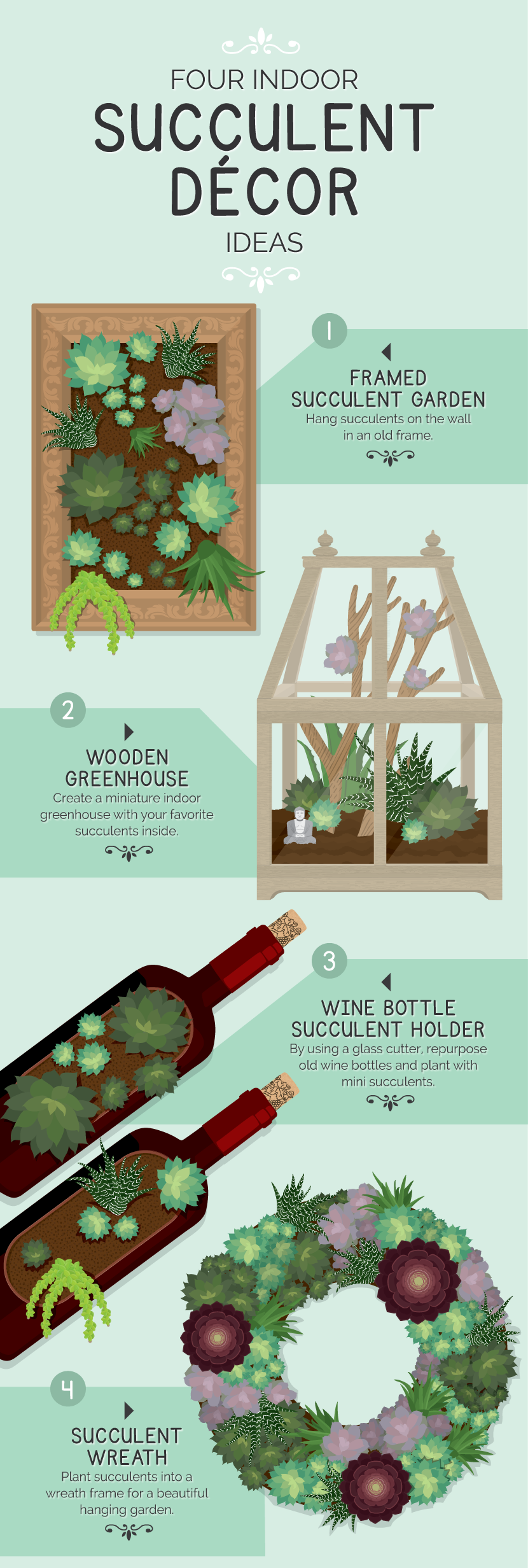Everything You Need to Know About Succulents
The Low-Maintenance, Stylish Plants
If you’ve tried growing your own herbs, veggies, or indoor plants before and haven’t had much success, there is one more type of plant you should try before hanging up your gardening gloves forever: succulents.
These unique plants have exploded in popularity in recent years… and for good reason!
Succulents offer a whole host of benefits that make them a great choice for gardeners who are struggling with their green thumb.

The diversity in color, texture, and shape amongst succulents is just one of the reasons these plants are so attractive to gardeners.
This diversity is also the reason that many people – botanists included – have a hard time defining exactly what a succulent is.
While the matter may still be up for debate, for the average gardener, what differentiates succulents from normal plants are their “fat” leaves that retain water.
It’s this unique adaptation that makes succulents fantastic plants for new gardeners.
With so much water stored in the plant itself, they need far less water and nutrients than traditional plants.
In fact, some of the hardiest types of succulents can go for months without being watered or fed!
This means you can be a bit absentminded, go on vacation, or simply ignore these plants and there’s a good chance they will still survive – and even thrive.

When you head out to the nursery to stock up on succulents, be prepared to be a little overwhelmed. Most nurseries that offer succulents carry a wide variety.
Each of these types has different water, light, and feeding needs. After all, there are over 20,000 different types of succulents out there – that’s a lot to choose from!
While many of these are great choices, here are three fantastic beginner succulents to grow:
Tree Aeonium
Tree aeonium is better known by its common names, tree anemone and desert pinwheel rose. They come in many colors, each featuring a striking rosette of thick, waxy leaves.
Caring for these succulents is simple: in cooler climates, they need full sun. In warmer climates or during the summer, give them a little bit of shade to protect them from the peak heat of the afternoon.
Overwatering tree anemones is a death sentence – they will rot and die. All they require is a well-draining soil like a cactus mix, which you can find at the local nursery along with these pretty succulents.
Donkey’s Tail
This creatively named succulent is popular for its hanging leaves that can grow up to 4 feet long.
When grown in pots, the many “tails” of this plant hang over and create a unique appearance that not many plants can match.
If you’re lucky, the ends of these tails can even flower in late summer, providing a beautiful bouquet of tiny flowers.
Caring for donkey’s tail couldn’t be easier. They like bright light but can’t tolerate a blinding heat, as they will burn.
Every single leaf of these plants holds water, so overwatering will actually rot the plant. Watering once every two weeks is more than enough.
As for soil, the typical mix for succulents works perfectly for donkey’s tail: a well-draining cactus mix.
As your donkey’s tail grows, divide it up and repot it to grow even more in the garden.
Zebra Haworthia
Haworthias are spiky, pretty succulents that are exceptional for two reasons: their unique texture, and the fact that they change color the more sun they get.
If given a good amount of light, the green parts of the leaves deepen. If they are given full sun all day long, they will deepen even further into a red or violet color.
Haworthias make excellent indoor plants due to their small size and low water requirements. If you give them partial sun (a windowsill is more than adequate),
they will thrive on little water and require almost no care whatsoever.
As long as they aren’t in very cold or very hot temperatures,
zebra haworthias will keep growing and adding spice to your windowsills for years.

Because succulents require little effort to take care of, they are easy to incorporate into all types of indoor designs.
Framed Succulent Garden
The most popular by far is the miniature succulent wall, which can be accomplished in several ways.
By repurposing an old picture frame and using felt plant inserts to hold the succulents, you can create a living picture that will brighten up any room in the home.
Enclosed Wooden Greenhouse
Of course, it’s also possible to build a makeshift enclosure out of old wood scraps and glass, or buy a mini-terrarium from a garden center and incorporate succulents.
The most creative indoor succulent gardeners will turn these into miniature desert scenes,
complete with different types of succulents to provide a sense of variety in the micro-landscape.
Wine Bottle Succulents
If you’ve got a few old wine bottles lying around the house, grab a glass cutter and cut off a section of the bottle lengthwise.
This will create a planter along the longer side of the bottle that you can fill with cactus mix and a few succulents.
To find ones small enough to fit into a wine bottle, all you need to do is go to the local nursery and ask them where their “mini-succulents” are.
These are also very cheap – typically around $2 per succulent – making this the cheapest indoor succulent décor idea yet!
Succulent Wreath
If you want to go overboard and take your succulent design to the next level, grab a moss wreath that’s wrapped in mesh.
Make cuttings of your favorite succulents, choosing small branches that will be easy to fit into the wreath’s mesh.
Place these cuttings carefully in the wreath. Don’t worry that they’ll root – succulents propagate themselves easier than most other plants.
Just make sure the wreath is moist. After you’re done filling the entire wreath, make sure the succulents’ cuttings are secure and hang it on the wall.
Because moss retains water so well, you don’t need to water it as often as you would a typical succulent garden. Once per month is more than enough.
Now that you know what succulents are, three beginner succulents to grow,
and a few ideas for how to incorporate them into your home and garden, there’s no excuse not to get into succulent gardening.
Embed the article on your site

